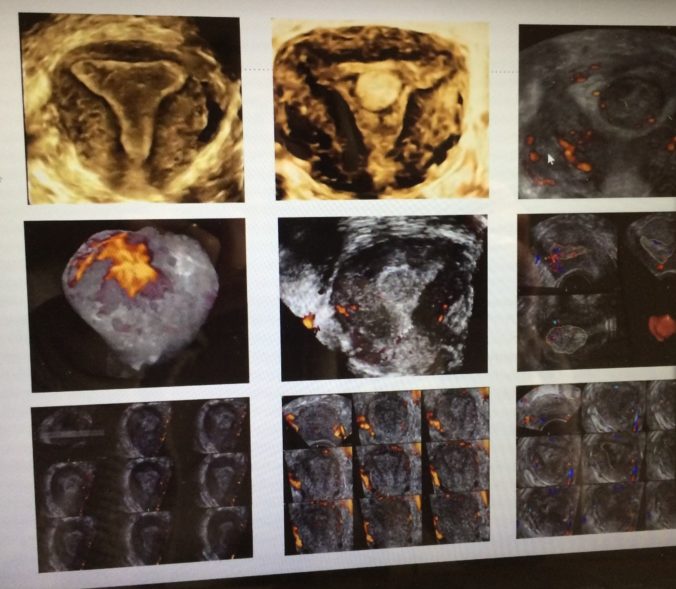
In Spain and, generally in developed countries, endometrial cancer is the most frequent cancer of the female genital tract and the third in mortality behind ovarian and cervical cancer. But, fortunately, an early diagnosis at initial stages I and II is associated with a 5-year survival of 96%. The diagnosis is based on the clinical study, on the diagnostic imaging techniques and on the histological study of the endometrial biopsy (considered the gold standard) and the biomarkers.
In this sense, Dr Marta Simón, gynaecologist at Dexeus Mujertogether with the medical team of the Gynaecological Diagnostic Imaging Service of the aforementioned centre, has carried out an extensive study to assess the diagnostic efficacy of 3D ultrasound in the early diagnosis of endometrial cancer and as an alternative to magnetic resonance imaging in the assessment of its myomietral and cervical infiltration. Research has been the subject of study for Dr. Simón’s doctoral thesis. Simón.
The work was performed from a sample of 340 patients, of which 321 finally included. In 121 cases the definitive histological diagnosis was endometrial cancer and in 200 patients normality or benign pathology was diagnosed. The diagnostic efficacy of 3D ultrasound in the diagnosis of endometrial cancer was good with a sensitivity of 90.1%, a specificity of 98%, and a precision of 95%. For the diagnosis of myometrial infiltration, 3D ultrasound showed a sensitivity of 93.8%, a specificity of 94.6% and a precision of 94.4% and for the diagnosis of cervical infiltration a sensitivity of 55.6%, a specificity of 99% and a 95.4% accuracy. 3D ultrasound clearly showed better diagnostic efficacy than magnetic resonance imaging in the diagnosis of myometrial and cervical infiltration.
Regarding the epidemiological data of the patients studied, 82.6% of the patients diagnosed with endometrial cancer were over 50 years old, with a mean body mass index of 27, 76.9% had menopause in the time of diagnosis and in 70.2% of cases the reason for consultation was abnormal uterine bleeding. The most frequently diagnosed histological type was the endometrioid type with 87% of the cases and with histological grades 1 and 2 in most of the cases. 71.9% of the patients were diagnosed in stage IA, this means that in 86.7% and 92.5% of the cases respectively, there was no myometrial or cervical infiltration at the time of diagnosis.
Therefore, and considering these results, the authors conclude that 3D ultrasound is a non-invasive and reproducible technique, whose great contribution is obtaining the third plane of space, which, through the different tools offered by 3D, allows diagnosis of endometrial cancer and the assessment of myometrial and cervical infiltration accurately with less economic cost and as a good alternative to magnetic resonance imaging.